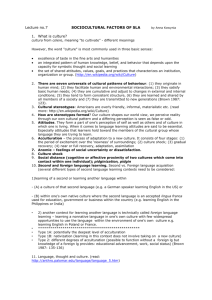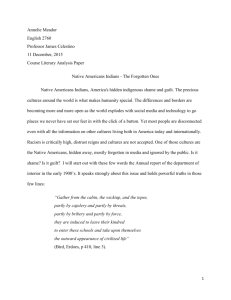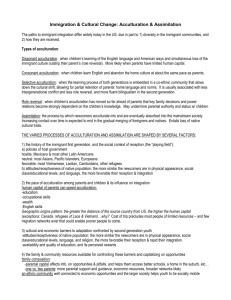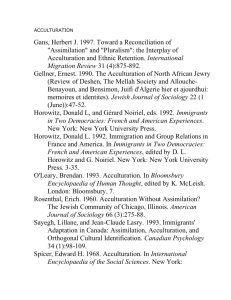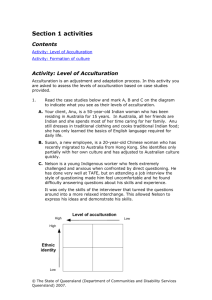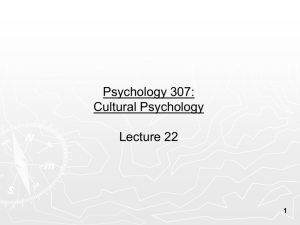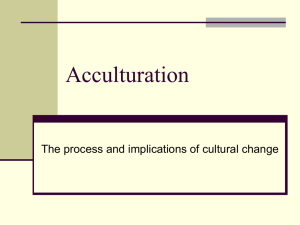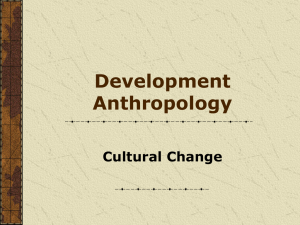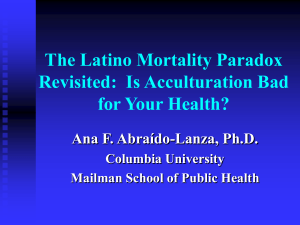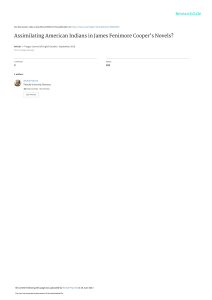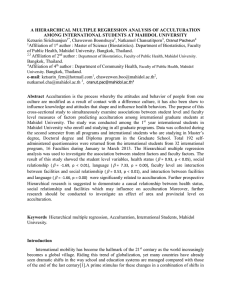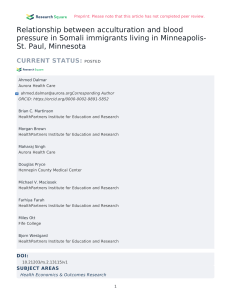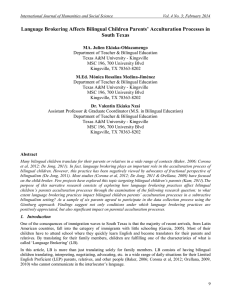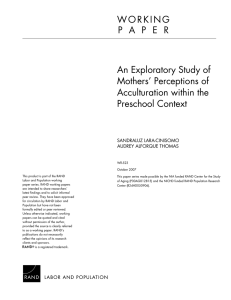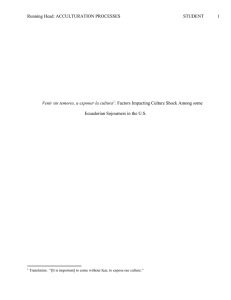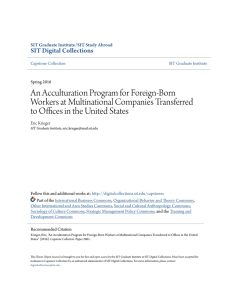Developmental Challenges of Being Pegged as Them
advertisement
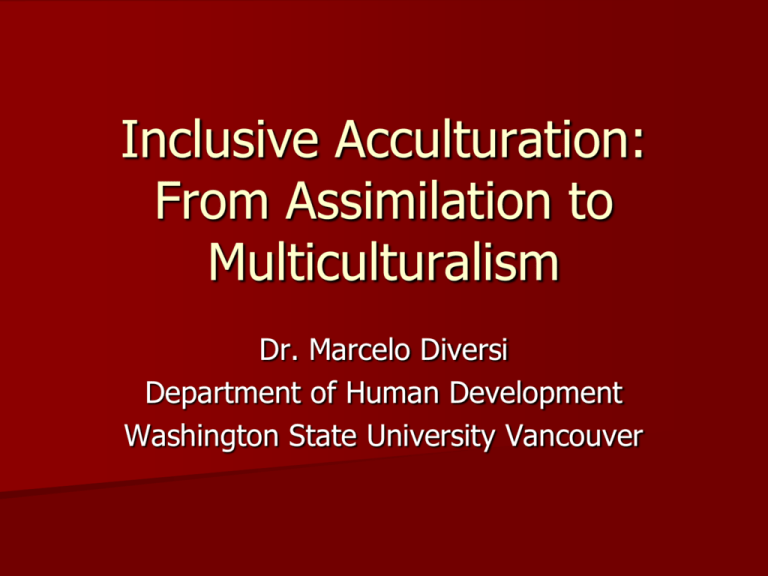
Inclusive Acculturation: From Assimilation to Multiculturalism Dr. Marcelo Diversi Department of Human Development Washington State University Vancouver Bronfenbrenner’s Ecological Theory Acculturation of Indigenous Peoples in the Americas From approximately 8 million in 1600s to 2.5 million indigenous people in the U.S. in the present http://factfinder.census.gov/servlet/ADPTable?_bm=y&-geo_id=01000US&qr_name=ACS_2009_5YR_G00_DP5YR5&-ds_name=&-_lang=en&redoLog=false&-format= For a powerful inside view of indigenous people’s acculturation reality, see Aaron Huey’s talk and images on America’s Native Prisoners of War: http://www.ted.com/talks/lang/eng/aaron_huey. html “Kill the Indian, save the man…” “A great general has said that the only good Indian is a dead one, and that high sanction of his destruction has been an enormous factor in promoting Indian massacres. In a sense, I agree with the sentiment, but only in this: that all the Indian there is in the race should be dead. Kill the Indian in him, and save the man.” U.S. Captain Richard H. Pratt (1892) Source: Official Report of the Nineteenth Annual Conference of Charities and Correction (1892), 46–59. Reprinted in Richard H. Pratt, “The Advantages of Mingling Indians with Whites,” Americanizing the American Indians: Writings by the “Friends of the Indian” 1880–1900 (Cambridge, Mass.: Harvard University Press, 1973), 260–271. Central Question Underlying Acculturation US and THEM Human Kinds David Berreby’s Us and Them: The Science of Identity Evolutionary adaptation pressures led to our tribal minds Evidence from the mind sciences “We found several sick and famished Indians, who begged hard for mercy and for food. It hurt my feelings; but the understanding was that all were to be killed. So we did the work.” Settler, Oregon, 1857, according to John Beeson, in A Plea for the Indians (1857; reprint: Ye Galleon Press, 1982) “Keiko was not one of our kind but nonetheless he was still one of us” Associate Press, “Oregon Bids Farewell to ‘Free Willy’ Star,” February 21, 2004 Human Development Nature Biological Processes Nurture Cognitive and Socioemotional Processes Time History Human Development Evolutionary Forces adaptation Domination Cooperation naturenurture genotype (how) The Mind (works) Individual dev. phenotype Society Sociology of Development Race, Gender, Sexuality, SOCIAL CLASS, belief systems Politics Ideology Power Us X Them: Instantiations and Lived Experience Why are some children our problem and some aren’t? http://www.youtube.com/watch?v=jDSrtre8m0 Developmental Challenges of Low Social Status Physical Health Mental Health Preparation for adulthood Education Identity Inclusive acculturation as positive development Humanizing experiences of “difference” Validation of ecological diversity against shallow celebrations of diversity (e.g., color blindness movement, Heroes and Holidays approach) Enriching intergenerational relations Acculturation Models JEAN PHINNEY’S MODEL High Connection With Host Culture Low Assimilation Biculturalism Marginal Separation High Low Connection with Culture of Origin Bringing it all back home Developmental challenges of youth and families pegged as them Expanding the sense of us Pedagogies that exercise the mind in perspective-taking and the politics of knowledge production Social justice requires high cognitive functioning


